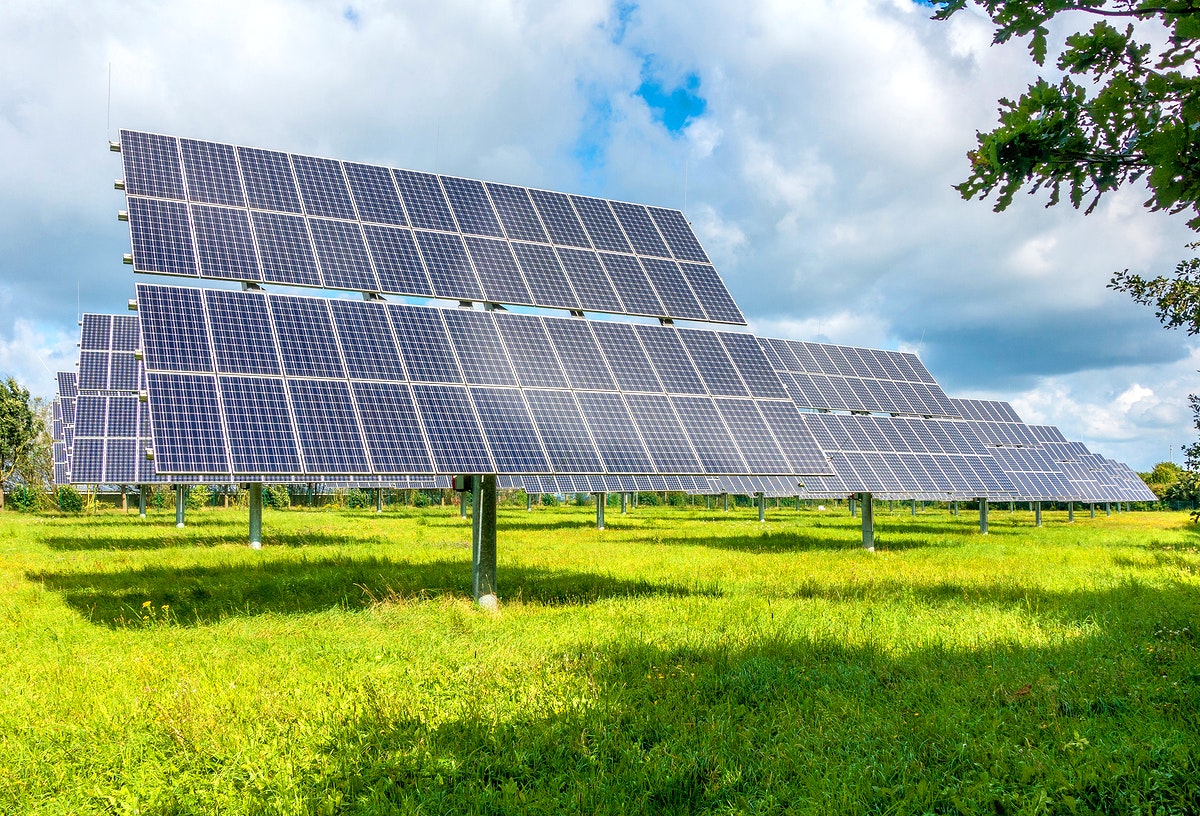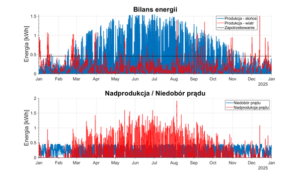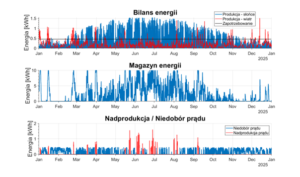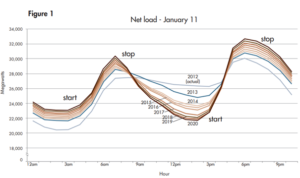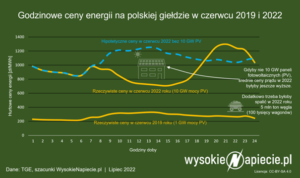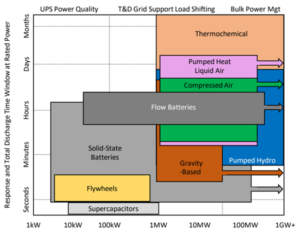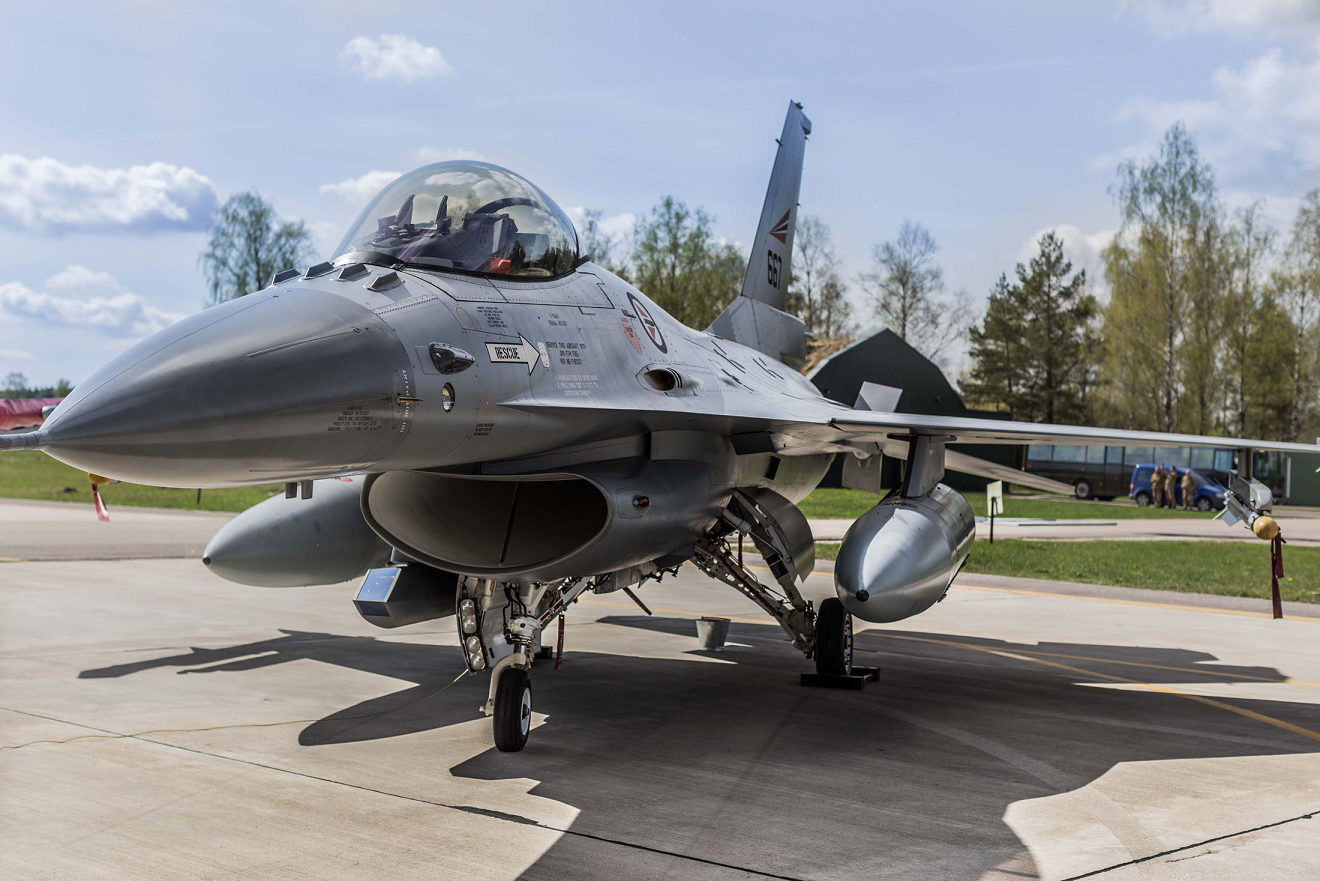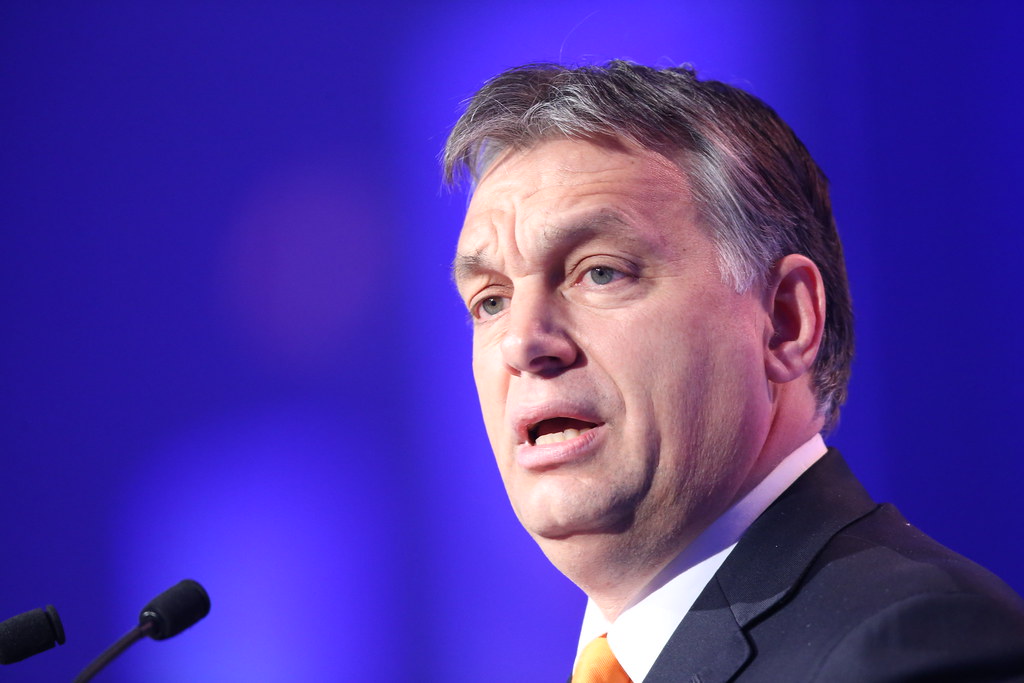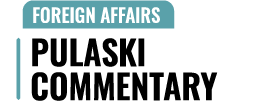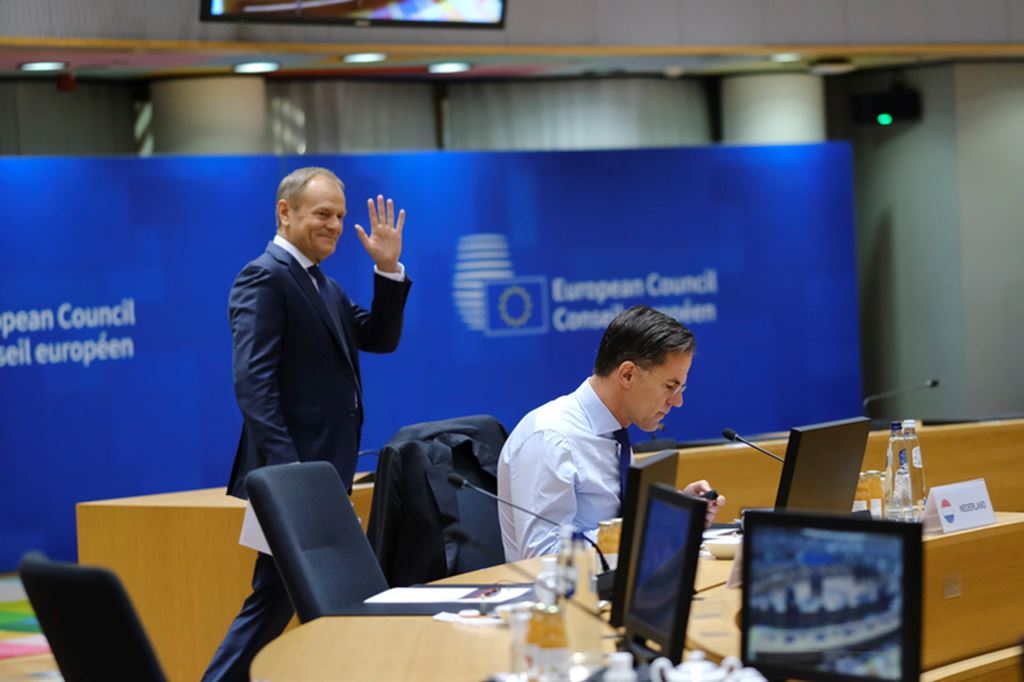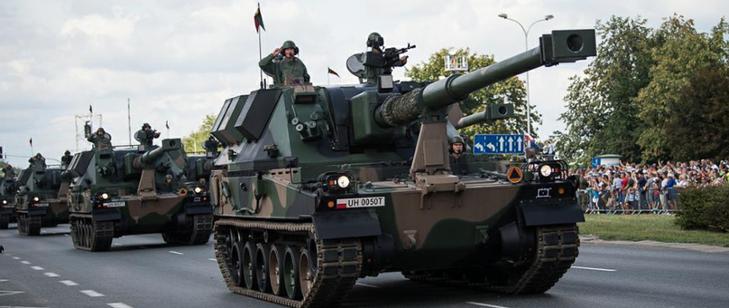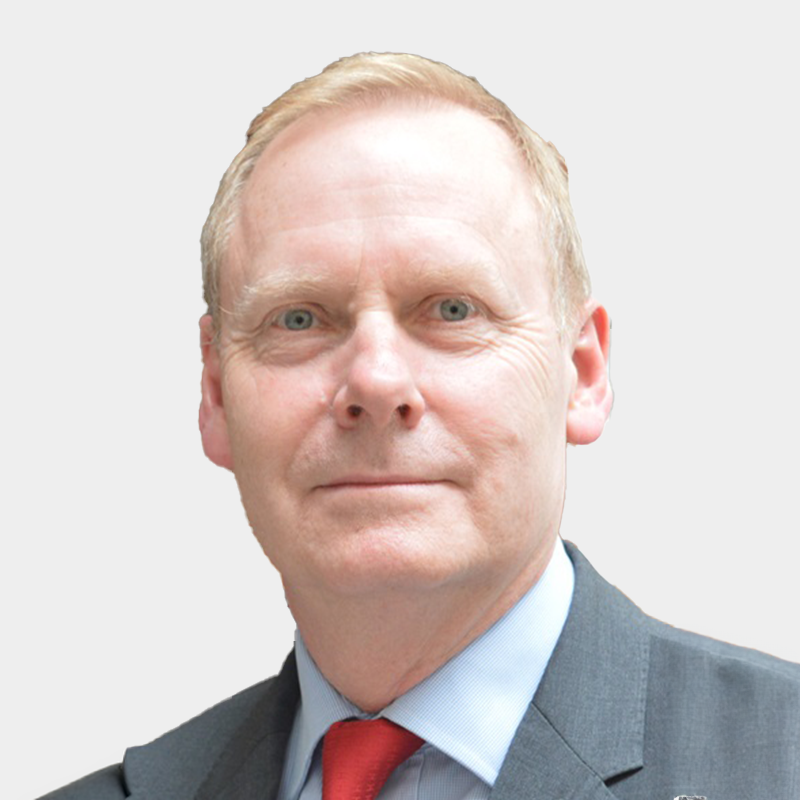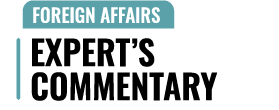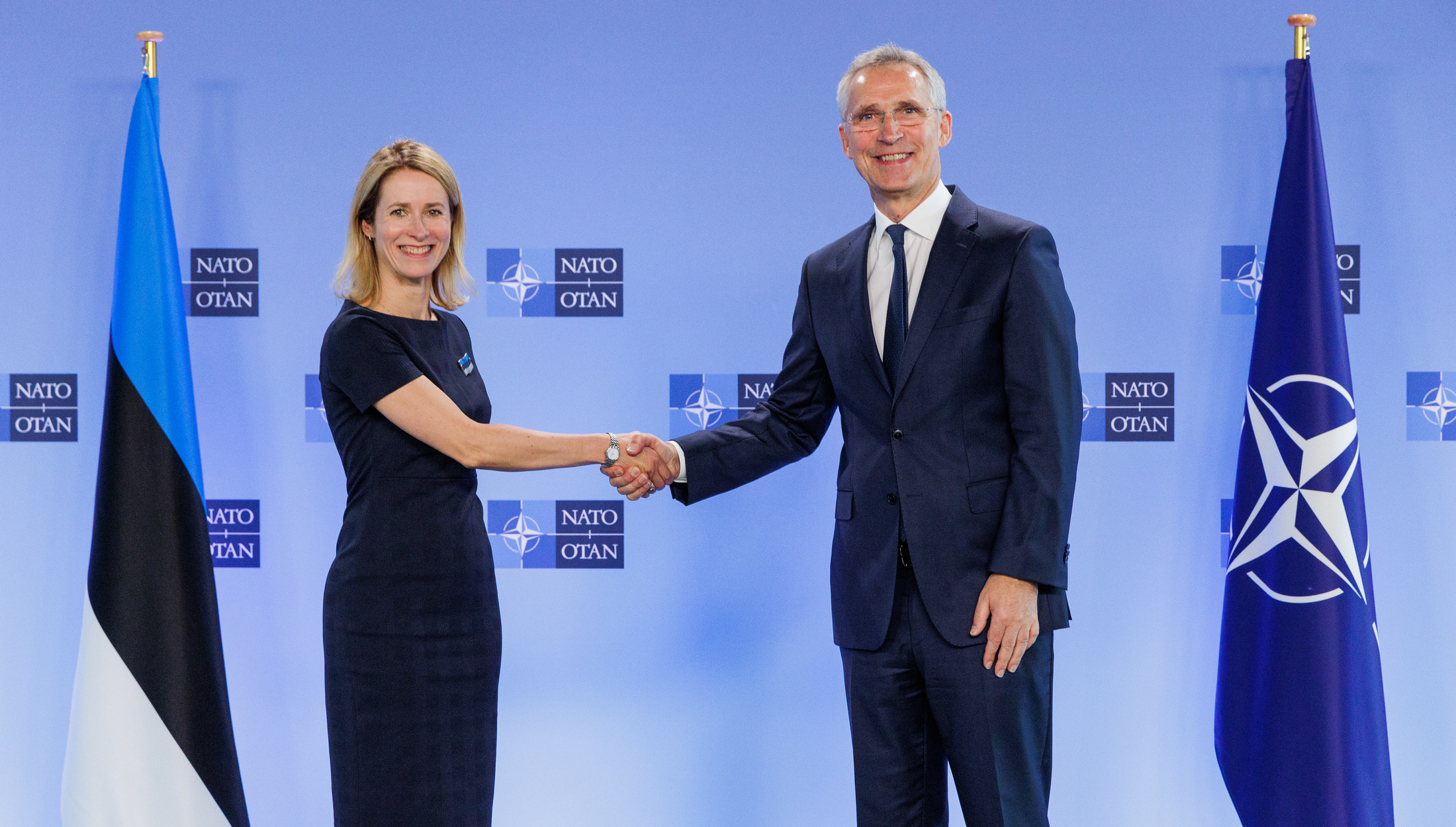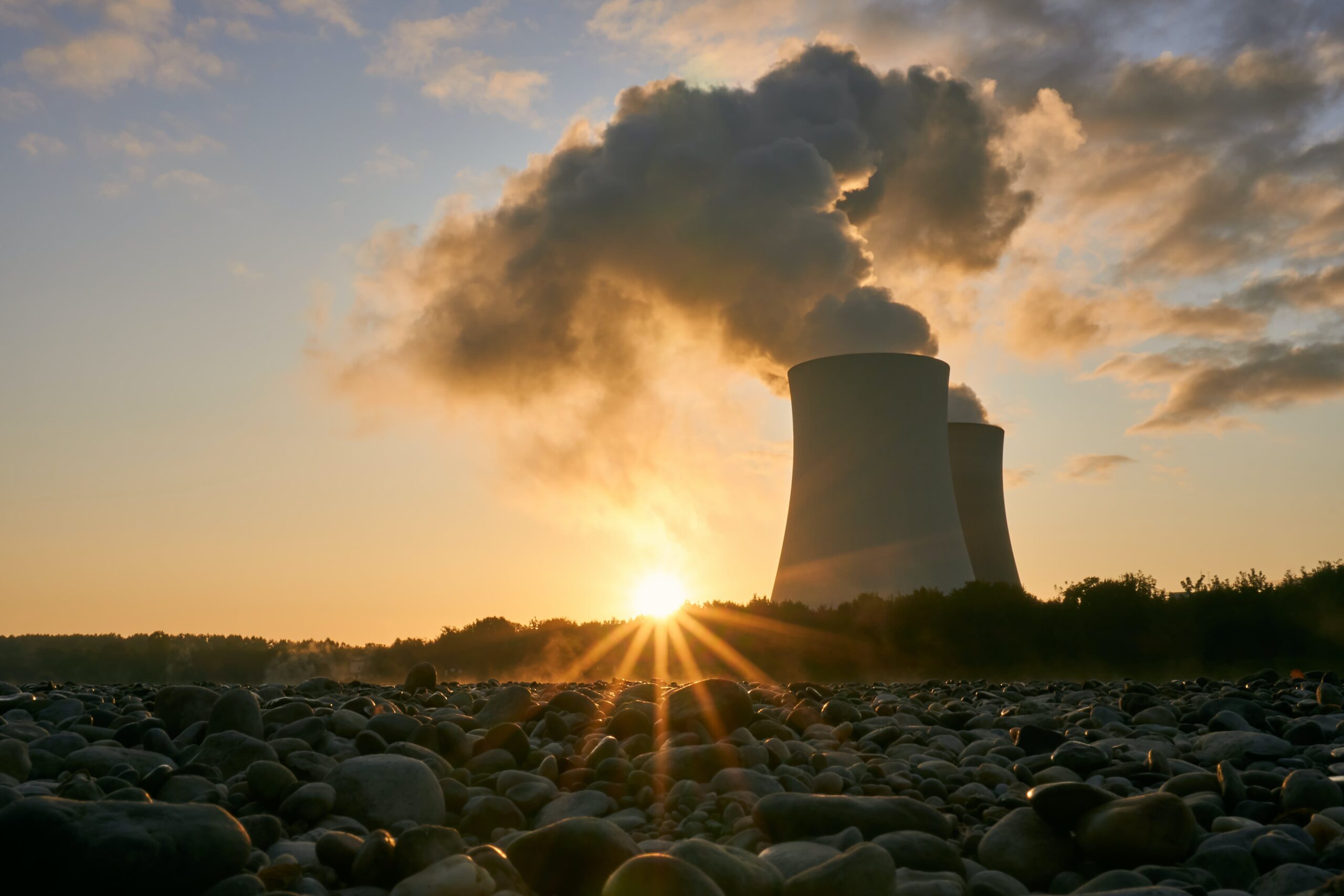Pulaski Policy Paper no 37, Grudzień 12, 2023
Polityka energetyczno-klimatyczna będzie jednym z najpoważniejszych wyzwań dla każdej ekipy rządzącej Polską w ciągu najbliższych kilku dekad. Wynika to zarówno z jej istotnego znaczenia politycznego, społecznego i makroekonomicznego, jak i z ogromnego obciążenia finansowego dla państwa, gospodarki oraz społeczeństwa, jakie się z nią wiąże. Rządy Zjednoczonej Prawicy pozostawiają po sobie z jednej strony wiele opóźnionych procesów transformacyjnych, wynikających głównie z chęci maksymalnego opóźnienia odejścia od węgla (patrz Umowa Społeczna[i]), a z drugiej całą listę ambitnych planów inwestycyjnych, z budową pierwszej polskiej elektrowni jądrowej na czele[ii]. Niestety, wiele z tych planów znajduje się w fazie zapowiedzi, bez szczegółowych harmonogramów i finansowania. Wyjątkiem jest znajdująca się w fazie projektowej elektrownia PEJ[iii], jednak wciąż nie określono jej finansowania. Nowa koalicja rządząca będzie musiała zmierzyć się z zadaniami przyspieszenia transformacji, urealnienia jej harmonogramu i priorytetów, zaprojektowania optymalnego dla Polski miksu energetycznego, dostosowania infrastruktury przesyłowo-dystrybucyjnej, zwiększania konkurencyjności na rynku energii, a przede wszystkim z wyzwaniami związanymi z finansowaniem transformacji. Wszystkie decyzje konieczne do podjęcia w najbliższym czasie będą miały skutki widoczne w znacznie dłuższych perspektywach, niż najbliższa kadencja.
Wiele wskazuje, że szykująca się do przejęcia władzy ekipa dobrze rozumie znaczenie kwestii energetyczno-klimatycznych. W podpisanej umowie koalicyjnej[iv] zapisano przyspieszenie transformacji wraz z zapowiedzią stworzenia stabilnego prawa wspomagającego jej sprawiedliwy przebieg. Strony zapowiedziały uwolnienie ograniczeń rozwoju źródeł odnawialnych oraz opracowanie założeń dla spójnego programu rozwoju energetyki jądrowej, wraz z określeniem sposobu jego finansowania. Umowa wskazuje także na konieczność modernizacji i rozbudowy sieci przesyłowych i dystrybucyjnych oraz na energetykę prosumencką, jako jeden z fundamentów rynku. W kwestii finansowania przedsięwzięć nowy rząd deklaruje odblokowanie środków z KPO oraz przeznaczenie całości wpływów z systemu ETS na inwestycje w transformację, równocześnie zapewniając o dbałości o niskie ceny dla gospodarstw domowych i firm w oparciu o mechanizmy zdrowej konkurencji i jasne zasady działania rynku. Równocześnie podkreślono wolę dialogu społecznego i respektowania ustaleń zawartych w umowie społecznej oraz zadeklarowano walkę z ubóstwem energetycznym. W momencie tworzenia niniejszej analizy do Sejmu trafił już poselski projekt ustawy mrożącej ceny energii w 2024r. oraz odblokowującej rozwój energetyki wiatrowej na lądzie[v].
Analizując światowe megatrendy, stan realizacji krajowych wyzwań transformacyjnych, a także otoczenie regulacyjne, technologiczne i społeczne, należy wskazać kilka kluczowych obszarów, w których konieczne jest podjęcie ważnych decyzji w najbliższym czasie.
- Przyspieszenie odejścia węgla jako źródła energii
Przyjęte przez ustępujący rząd założenie odejścia od wydobycia i wykorzystywana w wytwarzaniu węgla dopiero w 2049 roku[vi] jest trudne do realizacji i uzasadnienia ekonomicznego. Jako skutek kalkulacji politycznej, podyktowanej potrzebą zaspokojenia oczekiwań społecznych, będzie jednak rzutowało także na decyzje przyszłego rządu, gdyż strony umowy koalicyjnej, deklarując odejście od węgla, zapewniają równocześnie zamiar respektowania ustaleń. Energetyka węglowa, ze względu na rosnąca presję ceny emisji do CO2[vii], już dziś jest mierzy się z wyzwaniami niekonkurencyjności w stosunku do innych elementów miksu. Należy spodziewać się, że zjawisko to będzie się nasilać. Polskie kopalnie nie mają realnych możliwości utrzymania wydobycia na odpowiednio wysokim poziomie: wraz z wymogami geologicznymi wzrastają wyzwania technologiczne, a więc także koszty inwestycji. Spada dostępność pieniądza, narastają koszty pracy i luka kompetencyjna[viii]. Doświadczenia ostatnich lat, a zwłaszcza kryzysu energetycznego wywołanego rosyjską agresją na Ukrainę potwierdziły, że pomimo nadmiernej troska państwa o trwale nierentowne kopalnie węgla, nie gwarantują one pewności dostaw tego surowca i nie uniezależniają kraju od jego importu[ix].
Tworzące przyszły rząd partie zgodnie wskazują na konieczność przyspieszenia procesów rezygnacji ze spalania węgla. Koalicja Obywatelska chce pozbawić węgiel statusu dominującego źródła energii pierwotnej już 2030 roku[x], a Trzecia Droga zapowiedziała całkowite odejście od tego paliwa na 2040 rok[xi]. Kwestią nie budzącą już dzisiaj w Polsce sporu jest osiągnięcie neutralności klimatycznej, rozumianej jako zerowy lub ujemny bilans emisji CO2 już w 2050. Należy jednak podkreślić, że kierunek odejścia od paliwa węglowego w perspektywie ostatnich dekad spowalniania transformacji przez kolejne polskie rządy, będzie trudny do realizacji i kosztowny społecznie. Tu warto zwrócić uwagę na fakt, że wspomniana powyżej Umowa społeczna wiąże się ze zobowiązaniem rozwijania w okresie przejściowym technologii związanych z zachowaniem roli węgla, takich jak IGCC, CCS/CCUS czy SNG[xii]. W tle pojawia się zatem konkurencyjna do obowiązującej w UE wizja neutralności osiąganej nie poprzez wycofanie węgla, a zmianę technologii jego wykorzystywania.
- Kontynuacja budowy pierwszej polskiej elektrowni jądrowej i decyzje dotyczące pozostałych projektów atomowych
Według istniejącego konsensusu społecznego[xiii], elektrownie jądrowe są najlepszym dostępnym źródłem do pracy w podstawie systemu elektroenergetycznego, umożliwiającym jego stabilizowanie i bilansowanie, a w konsekwencji otwierającym możliwości rozbudowy mocy odnawialnych. Rozwój technologii nuklearnych jest zatem warunkiem udanej transformacji szczególnie w tak bardzo uzależnionej dziś od węgla Polsce. Energetyka nuklearna jest także narzędziem do budowania pozycji geopolitycznej kraju, poprzez wzmacnianie relacji transatlantyckich[xiv]. Cieszy fakt, że technologię jądrową uznano za niskoemisyjną i wspierającą transformację UE[xv]. Niestety wyzwania rozwoju atomu wiążą się z koniecznością znalezienia źródeł sfinansowania niezbędnych inwestycji na gigantyczną, nieznaną dotąd w Polsce skalę.
Kluczowa będzie aktualizacja programu polskiej energetyki jądrowej[xvi], a w szczególności weryfikacja możliwości jego realizacji w zakładanych ramach, które przewidują budowę 6-9 GWe mocy zainstalowanej w oparciu o wielkoskalowe reaktory typu PWR w ciągu zaledwie dwóch dekad. Już samo założenie realizacji całości planu w 2043 roku jest bardzo ambitne, ale trudno wyobrazić sobie jego pełną implementację w planowanym terminie. W tej chwili w fazę projektową wszedł dopiero pierwszy z potencjalnie sześciu projektów, w lokalizacji Lubiatowo-Kopalino[xvii]. Jego uruchomienie w 2033 r. jest już dziś bardzo trudnym wyzwaniem. Wciąż nie znamy całościowego kosztorysu inwestycji, a jej finansowanie też jest tajemnicą. Wiadomo, że pierwsza elektrownia jądrowa o mocy 1GWe może kosztować więcej, niż dzisiaj wynosi suma kapitalizacji wszystkich państwowych czempionów energetycznych[xviii]. Intensywne zaangażowanie stron, przetestowana technologia AP1000 oraz doświadczenie amerykańskich wykonawców, konsorcjum Westinghouse-Bechtel zwiększa szanse, jednak do realizacji harmonogramu potrzebna jest mobilizacja wszystkich stron przedsięwzięcia, precyzja i profesjonalizm w realizacji poszczególnych etapów oraz odrobina szczęścia. Doświadczenia realizacji podobnych inwestycji w innych krajach, w tym nawet w USA pokazują, że opóźnienia w tego typu inwestycjach są raczej standardem, niż wyjątkiem[xix].
O atomie jest głośno także poza oficjalnym programem państwowym. Projekt zbudowania drugiej wielkoskalowej elektrowni ogłosili miliarder Zygmunt Solorz wraz z byłym ministrem aktywów Jackiem Sasinem[xx]. Realizowana w oparciu o koreańską technologię APR1400 (KHNP) wraz z państwową PGE inwestycja miałaby dotyczyć bloku w Pątnowie i na ostatniej prostej rządu PIS uzyskała decyzję zasadniczą[xxi]. Z kolei bloki o mniejszej mocy, 200-300 MW, zwane niezbyt precyzyjnie SMR (small modular reactors) chcą w Polsce budować nawet cztery podmioty: Orlen Synthos Green Energy w oparciu o projekt BWRX-300 GE Hitachi, KGHM – NuScale[xxii], Grupa Azoty – USNC / Katowicka Specjalna Strefa Ekonomiczna oraz DB Energy – PWR-20 Last Energy[xxiii]. Pomimo obiecujących parametrów takich reaktorów i ich teoretycznej kompatybilności z polskim systemem, technologia ta wciąż nie osiągnęła i zapewne w najbliższych latach nie osiągnie fazy komercjalizacji[xxiv]. Dlatego dziś te atomowe wizje, należy obserwować z uwagą, ale i dużą rezerwą[xxv].
- Liberalizacja rynku gazu
Wszystkie istotne siły polityczne w Polsce deklarują poparcie przekształcania miksu energetycznego Polski w kierunku oparcia go o atom i źródła odnawialne. W perspektywie odstawiania kolejnych, zamortyzowanych już i pozbawionych wsparcia źródeł węglowych po 2025 roku[xxvi], a także wobec wyzwań stojących przed ciepłownictwem, należy uznać, że gaz przez wiele lat będzie pełnił istotną rolę w polskim systemie energetycznym[xxvii]. Obowiązek zwiększenia konkurencyjności na rynku tego paliwa wynika wprost z dyrektyw unijnych[xxviii]. W uzależnionej w przeszłości od dostaw rosyjskich Polsce działania liberalizujące miały charakter mało dynamiczny, a włączenie PGNiGu do Orlenu dodatkowo wzmocniło faktyczny monopol[xxix]. Próbujące działać na rynku krajowym sprzedawcy gazu odbijają się od ściany niekorzystnych regulacji i sztucznych barier wejścia. Przykładów jest wiele: wymogi rezerwacji nadmiernie wysokich mocy magazynowych, wysokość zabezpieczeń finansowych czy krótkie terminy na regazyfikację w gazoportach. Skutkiem jest m.in. brak wiążących deklaracji na wykorzystanie przepustowości drugiego w Gdańsku[xxx]. To promuje narodowego czempiona, uzależniając de facto bezpieczeństwo dostaw gazu wyłącznie od jednej, państwowej firmy. Efektem ubocznym jest brak konkurencji i możliwości optymalizacji zakupów paliwa po stronie klientów. Nowy rząd będzie musiał zmierzyć się z wyzwaniami dotyczącymi liberalizacji rynku z jednej strony, a zapobiegania ubóstwu energetycznemu z drugiej. Jeden z wyborczych konkretów Koalicji Obywatelskiej (87) zakładał wprost zamrożenie cen gazu w 2024 r. dla gospodarstw domowych i odbiorców wrażliwych[xxxi]. Pozostaje pytanie o przyszłość procesów liberalizacyjnych w tym obszarze.
- Przyspieszenie rozwoju generacji ze źródeł odnawialnych
Prowęglowa polityka rządu PiS przejawiała się m.in. w szybkim i skutecznym zablokowaniu rozwoju elektrowni wiatrowych na lądzie, na skutek tzw. ustawy odległościowej, przyjętej w pierwszych miesiącach rządów prawicy w 2016 roku[xxxii]. Pomimo jej częściowego złagodzenia, wciąż duża część projektów wiatrowych nie może być realizowana. Zapowiedź ustawy zmniejszającej odległość do 500 m. wraz z pakietem ułatwień inwestycyjnych oraz 5% udziałem społeczności lokalnych w przychodach z elektrowni została wprost sformułowana w programie Koalicji Obywatelskiej (konkret 86)[xxxiii]. Podobne postulaty stawia lewica. Jak wspomniano powyżej, pojawił się już poselski projekt ustawy w tej sprawie, natychmiast generując spór polityczny[xxxiv], co może wskazywać na ryzyko przenoszenia także przyszłych dyskusji na tematy energetyczne na poziom mało merytorycznej wymiany politycznych narracji i w ten sposób ich paraliżowania.
Nowy rząd przejmuje w spadku także zadanie przyspieszenia rozwoju elektrowni wiatrowych na morzu (offshore). Obowiązująca Polityka Energetyczna Polski do 2040 r[xxxv]. zakłada cele 5,9 GW offshore za siedem lat oraz 11 GW w 2040 roku. Jednak zdaniem m.in. NIK cele te mogą nie zostać osiągnięte, ze względu na liczne problemy[xxxvi]. Kwestie rozwoju infrastruktury towarzyszącej, dostępność kompetencji na miejscu, a przede wszystkim ułatwienia regulacyjne to kluczowe wyzwania dla nowego rządu w tym zakresie. Obecnie na Bałtyku rozwijane są projekty o łącznej mocy ok. 5,5 GW, podczas gdy szacunki dotyczące potencjału polskiej strefy na morzu sięgają nawet 33 GW mocy[xxxvii]. Czas na zmiany, otwierające w tym zakresie nowe możliwości.
Niewątpliwie trudnym wyzwaniem jest zapewnienie dalszego rozwoju źródeł fotowoltaicznych, także prosumeckich, które już dziś w słoneczne dni są przyczyną istotnych skoków mocy w systemie, testujących granice wydolności sieci[xxxviii]. Limitowanie mocy przyłączeniowych dla takich źródeł stanie się zapewne zjawiskiem trwałym.
Rozwój OZE we wszystkich kierunkach jest wpisany do programów wszystkich partii szykujących się do przejęcia władzy. Postulują one wsparcie dla rozwoju źródeł opartych na słońcu i wietrze, a także potencjalnie szczególnie ciekawych w polskich warunkach kierunków związanych ze biogazem i biometanem. Realizacja tych postulatów, wymaga istotnych działań także obszarze infrastruktury sieciowej, przebudowy rynku energii, zwiększania roli odbiorcy/prosumenta w systemie oraz nakładów na R&D, w szczególności w zakresie magazynowania energii.
- Strategia rozwoju infrastruktury sieciowej
Krajowe sieci przesyłowe i dystrybucyjne zostały zaprojektowane i zbudowane pod potrzeby scentralizowanej energetyki węglowej, wytwarzającej energię na południu kraju i przesyłającej ją na północ przy założeniu, że nie da się uniknąć strat. Trwające od dwóch dekad intensywne prace inwestycyjne przyniosły ogromną poprawę jakości pracy sieci: spadek awaryjności, minimalizację strat i zbudowanie fundamentów sieci inteligentnej[xxxix]. Postęp jest ogromny, ale wciąż nie wystarczający w świetle wyzwań transformacji, przede wszystkim rosnącej roli niestabilnych i rozproszonych źródeł odnawialnych. Ograniczona przepustowość sieci oraz skokowy wzrost liczby OZE, w tym lokalnych instalacji fotowoltaicznych, już dziś powodują istotne ograniczenia. Szacuje się, że ze względu na limity przyłączeniowe, zdecydowana większość gotowych do realizacji projektów OZE zostaje wstrzymana[xl].
Nowy rząd będzie musiał zmierzyć się z wyzwaniami związanymi z rozwojem sieci przesyłowych i dystrybucyjnych. Kluczowe kierunki to rozbudowa mocy przyłączeniowych, cyfryzacja oraz tworzenie sieci inteligentnych (smart grids). Wyzwaniem jest także wymiana liczników energii elektrycznej na urządzenia zdalnego odczytu. 1 stycznia 2023 r. na ponad 18,5 mln zainstalowanych liczników tylko 4 mln były urządzeniami typu smart metres[xli]. Partie dążące do przejęcia władzy dostrzegają istotność wyzwań gruntownej modernizacji sieci, o czym świadczą m.in. postulaty lewicy[xlii]. Wiele wskazuje na to, że rozważony zostanie projekt wydzielenia dystrybucji z pionowo zintegrowanych koncernów państwowych tak, by odblokować dodatkowe możliwości inwestycyjne OSD[xliii].
- Decentralizacja, energetyka prosumencka i magazyny energii
Procesy decentralizacyjne w energetyce przyspieszają, w całej Unii Europejskiej panuje trend wzmacniania modelu energetyki rozproszonej[xliv]. Kluczowym czynnikiem technologicznym będzie zwiększenie roli magazynów energii w systemie oraz w lokalnych podsystemach energetycznych. Tu wciąż jest wiele do zrobienia: technologiczny wyścig w skali światowej trwa, w ocenie wielu krajowych ekspertów jest to także znakomita okazja dla krajowych innowatorów. Warto stworzyć państwowy system wspierania prac R&D w kierunku efektywnych, skalowalnych i wydajnych magazynów. Istotną rolę mogą w tym obszarze odegrać technologie wodorowe[xlv], choć nie brakuje opinii, że znaczenie wodoru jest przeceniane[xlvi].
Kierunek decentralizacji energetyki i oparcia przyszłości o lokalne wspólnoty energetyczne, generujące i zużywające energię na miejscu, podkreśla w szczególności Koalicja Obywatelska[xlvii]. Ugrupowanie widzi szansę na zbudowanie nawet 700 takich klastrów. Wpisuje się to w trend przyszłości, opartej na energetyce rozproszonej, która poprzez dywersyfikację zwiększa bezpieczeństwo energetyczne odbiorców, a poprzez generowanie energii na miejscu, sprzyja rozwojowi. Ciekawym pomysłem, wpisanym do programu Trzeciej Drogi jest zezwolenie na kupno energii odnawialnej bezpośrednio od prywatnych właścicieli firm, co wymagałoby zmiany myślenia systemowego w prawie energetycznym[xlviii].
Sięgające po władzę partie wskazują na znaczenie magazynów energii, bez których nie sposób wyobrazić sobie efektywnego, bezpiecznie dostarczającego energię odnawialną systemu. Niestety technologie, którymi dziś dysponujemy nie są w stanie zapewnić możliwości magazynowania energii w takich ilościach, jakie są potrzebne krajowym systemom[xlix]. Wobec tej trudności część ugrupowań proponuje sięgnięcie po rozwiązania dostępne, choć kosztowne, czyli elektrownie szczytowo-pompowe, co wpisuje się w podjęte już przez ustępującą ekipę decyzje[l]. Warto przeanalizować możliwości wykorzystania krajowych zasobów nauki i biznesu do rozwoju tej gałęzi technologicznej. Mając ogromny potencjał jednego z liderów rynku baterii oraz świadomość potrzeb systemu, warto położyć szczególny nacisk na ten kierunek[li].
- Ciepłownictwo[lii]
Polska posiada wyjątkowy zasób, jakim są systemy ciepłownicze, które mogą stać się efektywnym narzędziem transformacji całej gospodarki. Dzisiejszy stan ciepłownictwa, w szczególności wysoki stopień uzależnienia od węgla oraz niski poziomu efektywności części instalacji jest mocno niedostosowany do wymogów otoczenia. Zużywający ok 40% węgla kamiennego energetycznego oraz 35% gazu ziemnego sektor jest największym konsumentem paliw kopalnych[liii]. Równocześnie sektorowi brakuje impulsów i możliwości inwestycyjnych, a rosnące koszty powodują, że wiele lokalnych, mniejszych, niezmodernizowanych ciepłowni i sieci, stoi na granicy upadku. Nowy rząd stanie przed koniecznością pilnego przygotowania i wdrożenia nowej strategii dla ciepłownictwa[liv] oraz podjęcia szeregu pilnych i kosztowych działań naprawczych.
- Finansowanie transformacji
Według szacunków odchodzącego rządu, zawartych w „Polityce energetycznej Polski do 2040 roku”[lv] łączne koszty transformacji energetycznej w latach 2021-2040 wyniosą 1,6 bln zł. Dokument nie uwzględnia jednak zwiększenia celów redukcyjnych i efektywnościowych wynikających z pakietów „Fit for 55” oraz „REPowerEU”, a zatem wymaga aktualizacji, która zapewne zostanie wkrótce wykonana. W przestrzeni publicznej w bieżącym roku pojawiły się także inne wyliczenia m.in. BloombergNEF wskazujące, że inwestycje w transformację polskiego miksu energetycznego mogą sięgnąć ok. 550 mld zł do 2030 roku oraz EY, według których nakłady na transformację sektora energetycznego z uwzględnieniem działań osłonowych do 2030 roku mogą wynieść ok. 600 mld zł, a do 2050 roku ponad 900 mld zł[lvi]. Wydaje się jednak, że należy szacować wartość całości przedsięwzięcia zdecydowanie bliżej górnych wartości, a nawet wyżej.
Nowa koalicja rządząca wskazuje dwa podstawowe źródła finansowania transformacji: odblokowane środki z Krajowego Planu Odbudowy[lvii] oraz z dochodów z systemu ETS[lviii]. Założenia te wymagają operacjonalizacji oraz uzupełnienia o kolejne źródła. Kwestie zapewnienia pokrycia kosztów transformacji wydają się najtrudniejszym wyzwaniem całego procesu.
- Walka z ubóstwem energetycznym
Wymogi transformacji energetycznej i ambitne cele zeroemisyjności obciążają państwo, gospodarkę, przedsiębiorstwa energetyczne oraz klientów. Rosnące koszty energii, zwłaszcza w społeczeństwie które odziedziczyło po PRLu brak nawyków jej oszczędzania, rodzi nowe wyzwania społeczne. Energia staje się towarem luksusowym, a komfort cieplny i życiowy coraz częściej musi być u części odbiorców reglamentowany ze względów ekonomicznych. Nowa koalicja rządząca nie zamierza rezygnować z polityki przeciwdziałania ubóstwu energetycznemu poprzez zamrożenie cen. 28 listopada w Sejmie pojawił się poselski projekt zamrożenia cen energii dla gospodarstw domowych i podmiotów wrażliwych do końca czerwca 2024 r. Szacowany koszt to 16,5 mld zł – podano w projekcie ustawy[lix].
Wnioski:
- Przyspieszenie transformacji energetycznej, a także zaprojektowanie i wdrożenie działań zmierzających do nowego, zdekarbonizowanego miksu energetycznego Polski jest warunkiem koniecznym dla utrzymania konkurencyjności polskiej gospodarki. Jest to więc zadanie o najwyższym priorytecie dla nowego rządu.
- Aktualizacji i zmiany strategii działania wymagają wszystkie elementy energetycznego łańcucha wartości: wytwarzanie, przesył i dystrybucja oraz handel energią. Nowy rząd staje przed wyzwaniem nadrobienia wieloletnich opóźnień wynikających z działań i zaniechań kilku ostatnich dekad.
- Istotne jest podjęcie decyzji dotyczących kontynuowania i przyspieszenia projektów transformacyjnych takich jak: projekty jądrowe, projekty offshore, energetyka prosumencka. Radykalnego przyspieszenia wymagają działania związane z sektorem ciepłowniczym oraz wygaszaniem wydobycia i wykorzystania węgla.
- Rząd będzie musiał podejmować działania pod presją społeczną, uwzględniając działania zapobiegające ubóstwu energetycznemu, ale równocześnie wzmacniając mechanizmy rynkowe.
Autor: Sławomir Krenczyk, Dyrektor Wykonawczy Fundacji im. Kazimierza Pułaskiego
Źródła:
[i]Umowa Społeczna dotycząca transformacji sektora górnictwa węgla kamiennego oraz wybranych procesów transformacji województwa śląskiego, https://www.gov.pl/web/aktywa-panstwowe/umowa-spoleczna
[ii] Informacje o projekcie, https://ppej.pl/o-projekcie
[iii] W trakcie prac nad analizą ustępująca Minister Klimatu wydała decyzję zasadnicza na wniosek PGE PAK Energia Jądrowa, drugiego podmiotu planującego budowę elektrowni jądrowej: https://biznes.pap.pl/pl/news/pap/info/3513579,pge-pak-ma-decyzje-zasadnicza-mkis-na-budowe-drugiej-elektrowni-jadrowej-w-polsce-(opis)
[iv] Umowa koalicyjna, https://platforma.org/upload/document/203/attachments/433/UmowaKoalicyjna.pdf
[v] Rafał Zasuń, Magdalena Skłodowska, Bartłomiej Derski, Zamrożenie cen prądu, gazu i ogrzewania. 15 mld zł wyłoży Orlen, https://wysokienapiecie.pl/94776-zamrozenie-cen-pradu-gazu-i-ogrzewania-15-mld-zl-wylozy-orlen/
[vi] Umowa Społeczna dotycząca transformacji sektora górnictwa…
[vii] „Raport KOBiZE z rynku CO2”, https://www.kobize.pl/uploads/materialy/materialy_do_pobrania/raport_co2/2023/KOBiZE_Analiza_rynku_CO2_czerwiec_2023.pdf
[viii] Skonsolidowany raport półroczny GK LW Bogdanka za I półrocze 2023 r.” https://ri.lw.com.pl/raporty-okresowe/ih-2023
[ix] Raport MAP podsumowujący interwencyjny import i dystrybucję węgla kamiennego w sezonie grzewczym 2022/2023, https://www.gov.pl/attachment/f6eead22-16a1-489f-93bc-83fe58471d7c,
[x] 100 konkretów na pierwsze 100 dni rządów!, https://100konkretow.pl/wszystkie-konkrety/
[xi] Odnawialne źródła energii – czyste powietrze i ochrona klimatu, https://polska2050.pl/odnawialne-zrodla-energii-to-czyste-powietrze-i-ochrona-klimatu/,
[xii] Umowa Społeczna dotycząca transformacji sektora…
[xiii] Poparcie społeczne dla budowy elektrowni jądrowej w Polsce – badania z listopada 2020 r. (62,5% Polek i Polaków popiera budowę elektrowni jądrowych w Polsce.), https://www.gov.pl/web/klimat/poparcie-spoleczne-dla-budowy-elektrowni-jadrowej-w-polsce—badania-z-listopada-2020-r
[xiv] WSF: Central and Eastern Europe as a New Center of Gravity, https://warsawsecurityforum.org/2023wsf-report,
[xv] MEPs back plans to boost Europe’s Net-Zero technology production, https://www.europarl.europa.eu/news/pl/press-room/20231117IPR12205/meps-back-plans-to-boost-europe-s-net-zero-technology-productio
[xvi] Program polskiej energetyki jądrowej, https://www.gov.pl/web/polski-atom/program-polskiej-energetyki-jadrowej
[xvii] Umowa na projekt pierwszej elektrowni jardowej podpisana. Premier: wiek XXI należy do https://www.pap.pl/aktualnosci/umowa-na-projekt-pierwszej-elektrowni-jadrowej-podpisana-premier-wiek-xxi-nalezy-do
[xviii] Barbara Oksińska, Niebotyczne koszty budowy elektrowni jądrowych. Oto najnowsze wyliczenia, https://businessinsider.com.pl/biznes/niebotyczne-koszty-budowy-elektrowni-jadrowych-oto-najnowsze-wyliczenia/yx13ejc
[xix] Catherine Clifford, America’s first new nuclear reactor in nearly seven years starts operations, https://www.cnbc.com/2023/07/31/vogtle-unit-3-nuclear-reactor-long-delayed-starts-delivering-power.html
[xx] Budowa reaktorów jądrowych w Polsce. Podpisano list intencyjny, https://www.pap.pl/aktualnosci/news%2C1467366%2Cbudowa-reaktorow-jadrowych-w-polsce-podpisano-list-intencyjny.html
[xxi] PGE PAK ma decyzję zasadniczą MKiŚ na budowę drugiej elektrowni jądrowej w Polsce (opis), https://biznes.pap.pl/pl/news/pap/info/3513579,pge-pak-ma-decyzje-zasadnicza-mkis-na-budowe-drugiej-elektrowni-jadrowej-w-polsce-(opis)
[xxii] Tu jednak pojawiają się wątpliwości w związku z decyzją NuScale o zerwaniu współpracy w ramach projektu SMR w Utah: Timothy Gardner, Manas Mishra, NuScale ends Utah project, in blow to US nuclear power ambitions, https://www.reuters.com/business/energy/nuscale-power-uamps-agree-terminate-nuclear-project-2023-11-08,
[xxiii] Natalia Stępień, Małe reaktory jądrowe w Polsce. Są pierwsze lokalizacje, https://www.money.pl/gospodarka/male-reaktory-jadrowe-w-polsce-sa-pierwsze-lokalizacje-6922280487234176a.html
[xxiv] R. Kaczmarczyk, P. Hałoń, Wyzwania i potencjał reaktorów SMR w transformacji energetycznej, https://www2.deloitte.com/pl/pl/pages/energy-and-resources/articles/atom-in-action/Wyzwania-i-potencjal-reaktorow-SMR-w-transformacji-energetycznej.html
[xxv] M. Oettingen, Wiarygodność Partnera Technologicznego Kluczowa do Wdrożenia Reaktorów Jądrowych Typu SMR, https://pulaski.pl/wiarygodnosc-partnera-technologicznego-kluczowa-do-wdrozenia-reaktorow-jadrowych-typu-smr ,
[xxvi] A. Gawlikowska-Fyk, Po 2025r. węgiel będzie wychodził z polskiego systemu energetycznego falami – luka węglowa, https://www.forum-energii.eu/po-2025-r-wegiel-bedzie-wychodzil-z-polskiego-systemu-energetycznego-falami
[xxvii] European natural gas imports, https://www.bruegel.org/dataset/european-natural-gas-imports
[xxviii] Liberalizacja rynku gazu, https://www.ure.gov.pl/pl/paliwa-gazowe/liberalizacja-rynku-ga
[xxix] Tomasz Jóźwik, dostatnie życie gazowego monopolisty. Orlen nie ma konkurencji na rynku gazu [OPINIA], https://serwisy.gazetaprawna.pl/energetyka/artykuly/8728428,orlen-pgnig-gazowy-monopolista.html
[xxx] GAZ-SYSTEM zakończył fazę składania ofert przez Uczestników zarejestrowanych w procedurze Open Season FSRU 2, https://www.gaz-system.pl/pl/dla-mediow/komunikaty-prasowe/2023/listopad/17-11-2023-gaz-system-zakonczyl-faze-skladania-ofert-przez-uczestnikow-zarejestrowanych-w-procedurze-open-season-fsru-2.html
[xxxi] 100 konkretów na pierwsze 100 dni rządów!, https://100konkretow.pl/wszystkie-konkrety/
[xxxii] Ustawa z dnia 20 maja 2016 r. o inwestycjach w zakresie elektrowni wiatrowych, https://isap.sejm.gov.pl/isap.nsf/DocDetails.xsp?id=WDU20160000961
[xxxiii] 100 konkretów na pierwsze 100 dni rządów…
[xxxiv] Borys Budka: nie ma mowy o wywłaszczeniach pod wiatraki nikt nie będzie mógł blokować, https://www.pap.pl/aktualnosci/borys-budka-nie-ma-mowy-o-wywlaszczeniach-pod-wiatraki-nikt-nie-bedzie-mogl-blokowac
[xxxv] Polityka energetyczna Polski do 2040 r., https://www.gov.pl/web/klimat/polityka-energetyczna-polski
[xxxvi] T. Słaboszowski, R. Malcharek, M. Mieszalska, Opóźnienia w rozwoju morskiej energetyki wiatrowej – zagrożenie bezpieczeństwa kraju, https://www.nik.gov.pl/2022/05/opoznienia-w-rozwoju-morskiej-energetyki-wiatrowej-zagrozenie-bezpieczenstwa-kraju.html
[xxxvii] Nowy potencjał Bałtyku: 33 GW mocy i 20 nowych obszarów pod MFW (RAPORT), http://psew.pl/nowy-potencjal-baltyku-33-gw-mocy-i-20-nowych-obszarow-pod-mfw-raport
[xxxviii] Fotowoltaika: dlaczego panele wyłączają się w słoneczne dni?, https://www.ure.gov.pl/pl/urzad/informacje-ogolne/aktualnosci/10971,Fotowoltaika-dlaczego-panele-wylaczaja-sie-w-sloneczne-dni.html
[xxxix] Energetyka, dystrybucja, przesył, Raport 2023 PTPiREE http://www.ptpiree.pl/raporty/2023/ptpiree_raport_2023.pdf
[xl] Informacja o dostępności mocy przyłączeniowej do sieci przesyłowej, https://www.pse.pl/obszary-dzialalnosci/krajowy-system-elektroenergetyczny/informacja-o-dostepnosci-mocy-przylaczeniowej
[xli] Liczniki zdalnego odczytu – wymagania PTPiREE, https://www.smart-grids.pl/technologie/4263-liczniki-zdalnego-odczytu-wymagania-ptpiree.html
[xlii] Program Wyborczy KW Nowa Lewica, Program Wyborczy Lewicy (klub-lewica.org.pl)
[xliii] Wydzielenie operatorów lekarstwem na kryzys sieciowy?, Wydzielenie operatorów lekarstwem na kryzys sieciowy? – WysokieNapiecie.pl
[xliv] Energia i Zielony Ład, Energia i Zielony Ład (europa.eu)
[xlv] Polska Strategia Wodorowa do roku 2030, Polska Strategia Wodorowa do roku 2030 – Ministerstwo Klimatu i Środowiska – Portal Gov.pl (www.gov.pl)
[xlvi] Patrz Pulaski Policy Paper P.Przybyło https://pulaski.pl/pulaski-policy-paper-europes-hydrogen-strategy-failure-negligible-chances-for-extensive-production-of-cost-effective-green-hydrogen-in-europe-piotr-przybylo , dostep 1.12.2023r.
[xlvii] 100 konkretów na pierwsze 100 dni rządów!, 100 konkretów na pierwsze 100 dni rządów Koalicji Obywatelskiej (100konkretow.pl)
[xlviii] Odnawialne źródła energii – czyste powietrze i ochrona klimatu, Odnawialne źródła energii – czyste powietrze i ochrona klimatu (polska2050.pl)
[xlix] Raport „Wpływ rozbudowy infrastruktury magazynów energii na rozwój gospodarczy w Polsce – prognoza do 2040 r.”, RAPORT – Polskie Stowarzyszenie Magazynowania Energii – PSME
[l] Ireneusz Chojnacki, Wchodzi w życie specustawa pod wielkie inwestycje energetyczne, Elektrownie szczytowo-pompowe w Polsce. Wchodzi w życie specustawa (wnp.pl)
[li] Tomasz Elżbieciak, Magazyny energii coraz bardziej potrzebne polskiej energetyce, Magazyny energii coraz bardziej potrzebne polskiej energetyce – WysokieNapiecie.pl
[lii] Patrz: S.Krenczyk „Raport Pułaskiego: Ciepłownictwo – strategiczny problem bezpieczeństwa energetycznego w Polsce”, https://pulaski.pl/raport-pulaskiego-cieplownictwo-strategiczny-problem-bezpieczenstwa-energetycznego-w-polsce
[liii] Patrz: P.Kleinschmidt „Przyszłość bez gazu i węgla. Strategia dla sektora ciepła”, https://www.forum-energii.eu/cieplownictwo-bez-wegla-i-gazu
[liv] Strategie, plany, programy
Strategia dla ciepłownictwa do 2030 r. z perspektywą do 2040 r., Strategia dla ciepłownictwa do 2030 r. z perspektywą do 2040 r.: Biuletyn Informacji Publicznej Ministerstwa Klimatu i Środowiska (mos.gov.pl)
[lv] Polityka energetyczna Polski do 2040 r., Polityka energetyczna Polski do 2040 r. – Ministerstwo Klimatu i Środowiska – Portal Gov.pl (www.gov.pl)
[lvi] Ogromne koszty polskiej transformacji energetycznej i równie ogromna luka inwestycyjna, Ogromne koszty polskiej transformacji energetycznej i równie ogromna luka inwestycyjna – Bankier.pl
[lvii] O Krajowym Planie Odbudowy, O Krajowym Planie Odbudowy – Krajowy Plan Odbudowy – Portal Gov.pl (www.gov.pl)
[lviii] Unijny system handlu uprawnieniami do emisji (EU ETS), Unijny system handlu uprawnieniami do emisji (EU ETS) – Komisja Europejska (europa.eu)
[lix] R. Zasuń, M. Skłodowska, B. Derski, op. cit.
